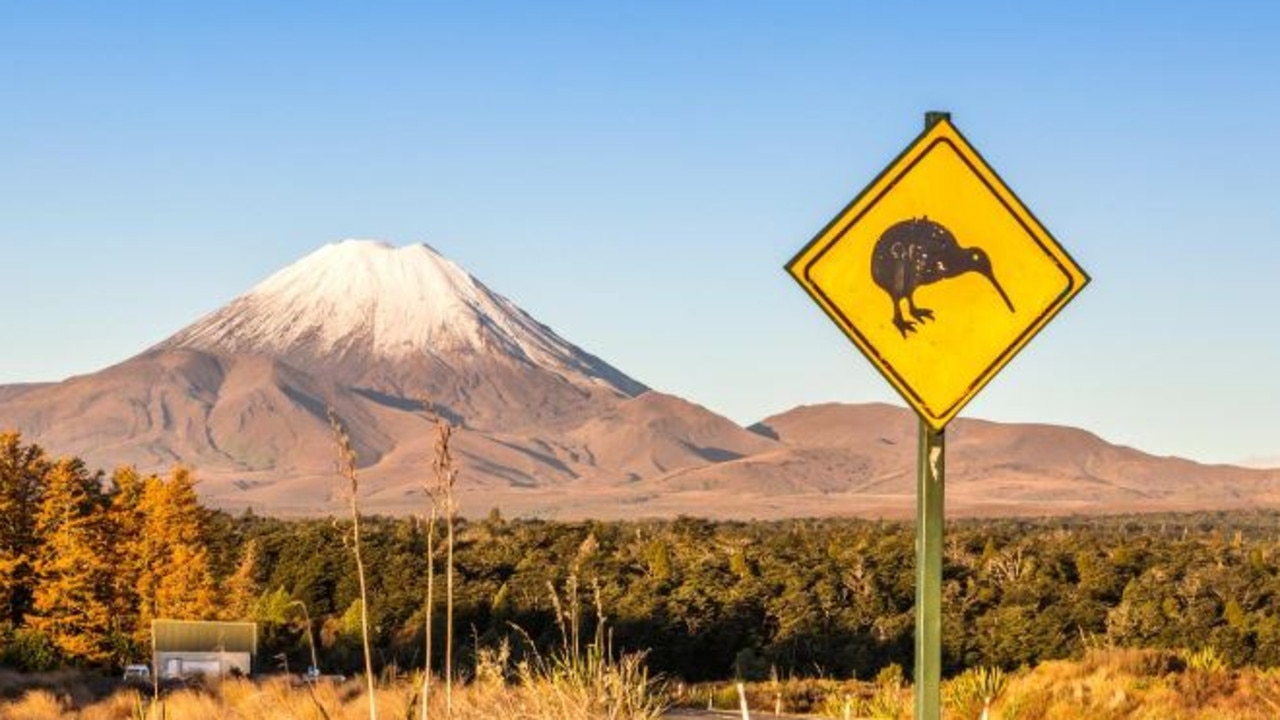Scientists raise alert level for first time after 700 earthquakes detected in New Zealand
A volcano responsible for the biggest eruption to rock earth in the last 70,000 years is just 2400km away. And scientists have just raised its alert level.
It was responsible for the biggest eruption on earth in the last 5000 years – and now, New Zealand’s Taupo “supervolcano” is again showing increased signs of “volcanic unrest”.
The Volcanic Alert Level for the volcano – located just 2400km from Tasmania – was raised to Volcanic Alert Level 1 for the first time yesterday, making headlines across the globe.
The alert sparked fears of a potential eruption within a nation still scarred from the devastating White Island eruption in 2019, which killed 22 people and left 25 with horrific injuries.
Adding to the anxiety is the fact that when Taupo last blew in around the year 232AD, it was the biggest eruption on earth in the last 5000 years, while an even bigger supereruption 26,000 years ago was the most powerful eruption to rock the earth in the last 70,000 years.
But just how likely is a major eruption – and what would happen if such a disaster were to unfold?
What’s happening?
The alert level was raised after 700 earthquakes were recorded in the area since May, indicating “volcanic unrest is occurring”.
While most of those were too small to feel, the largest was a 4.5-magnitude quake.
According to GeoNet, which supplies geological hazard information for New Zealand, volcanic unrest is “when magma or magma-heated hot water and steam forces its way through the ground beneath a volcano, producing earthquakes, ground movement and changes in hydrothermal systems”.
It noted that there have been 17 previous episodes of unrest over the past 150 years at Taupō volcano, and “the earthquakes and deformation could continue for the coming weeks or months”.

Should we be worried?
In a word, no.
GeoNet states that the chance of an eruption at Taupo “remains very low in any one year”, even in the face of increased activity.
Volcanologist Rebecca Carey from the University of Tasmania told news.com.au there was no need to panic at the moment.
“Taupo volcano is a volcano that’s quite active, and it’s what we call a caldera volcano – it goes through phases of small eruptions that are followed by large eruptions on timescales of tens of thousands of years, and some of the repose periods between those events can be thousands to tens of thousands of years,” she said.
“It had been at alert level zero, but because it’s a volcano, there’s magma underneath, and as magma moves around magma reservoirs, and also through the earth’s crust, it cracks surrounding rocks.
“The alert level has been increased to one, which just represents slightly elevated levels of earthquakes due to that rock cracking process as magma moves around.”
She stressed that there were no other signs of unrest, such as elevated temperature levels in the lake as well as volcanic gases, which could indicate an eruption is brewing.

“Larger eruptions only happen every hundred thousand years or so, and the last really violent one was only 2000 years ago, so in terms of what we’d be expecting from Taupo in the next 10,000 years or so, we’d expect more smaller-volume, low intensity eruptions rather than another caldera supereruption,” Dr Carey added.
“We can’t be absolutely sure, because magma is produced at different rates, depending on how plates are moving in the earth’s crust, but in order to erupt with a really high volume of magma, supervolcano eruptions need really long storage times for magma generated in the crust.
“New Zealand has some of the best-monitored volcanoes globally, and this change in alert level is probably triggering more monitoring approaches, for example, site surveys, temperature surveys and gas surveys. But the alert level has not been heightened to a level that would trigger anything more than that.”
Memories of White Bay tragedy
While the White Bay tragedy is still fresh in the minds of New Zealanders, Dr Carey stressed that White Island and Taupo were two very different volcanoes with radically different behavioural patterns.
“With White Island, it’s very common to get explosions with very little warning, but with caldera volcanoes (like Taupo), because of the amount of magma stored at depth, we would expect to see a range of heightened indicators before an eruption,” she said.

“They are completely different so we shouldn’t expect the same styles of activities.”
What would a supereruption look like?
Dr Carey said “big, violent” supereruptions like the one from Taupo 26,000 years ago needed timescales of “hundreds of thousands of years” to form.
She said that if and when a supereruption at Taupo did occur, Australia would likely be impacted by plumes of ash travelling across the ocean, which could see planes grounded.
Sadly, in New Zealand it would be a completely different story, with most of the North Island “blanketed in ash” and causing significant economic and social impacts, although there would likely be enough warning to evacuate nearby residents as the alert level rose.
“The important message is that this is very characteristic for Taupo – it has happened in the past, most recently in 2018,” she said.
“At this point in time, monitoring systems are so sophisticated at picking up lots of earthquake events so there’s nothing really alarming about this earthquake unrest.”
She added that a major eruption would not be due for thousands of years, meaning nobody alive today need be concerned about a major Taupo incident.






